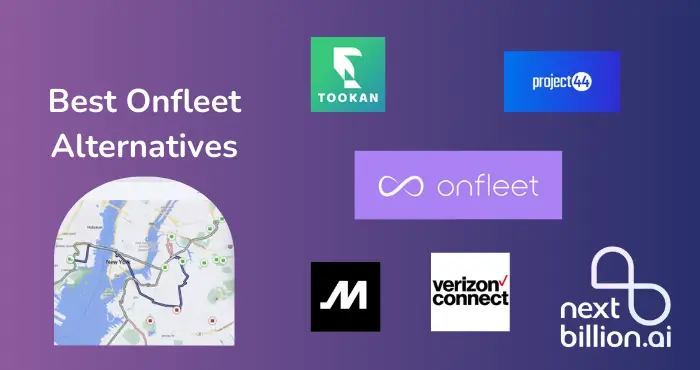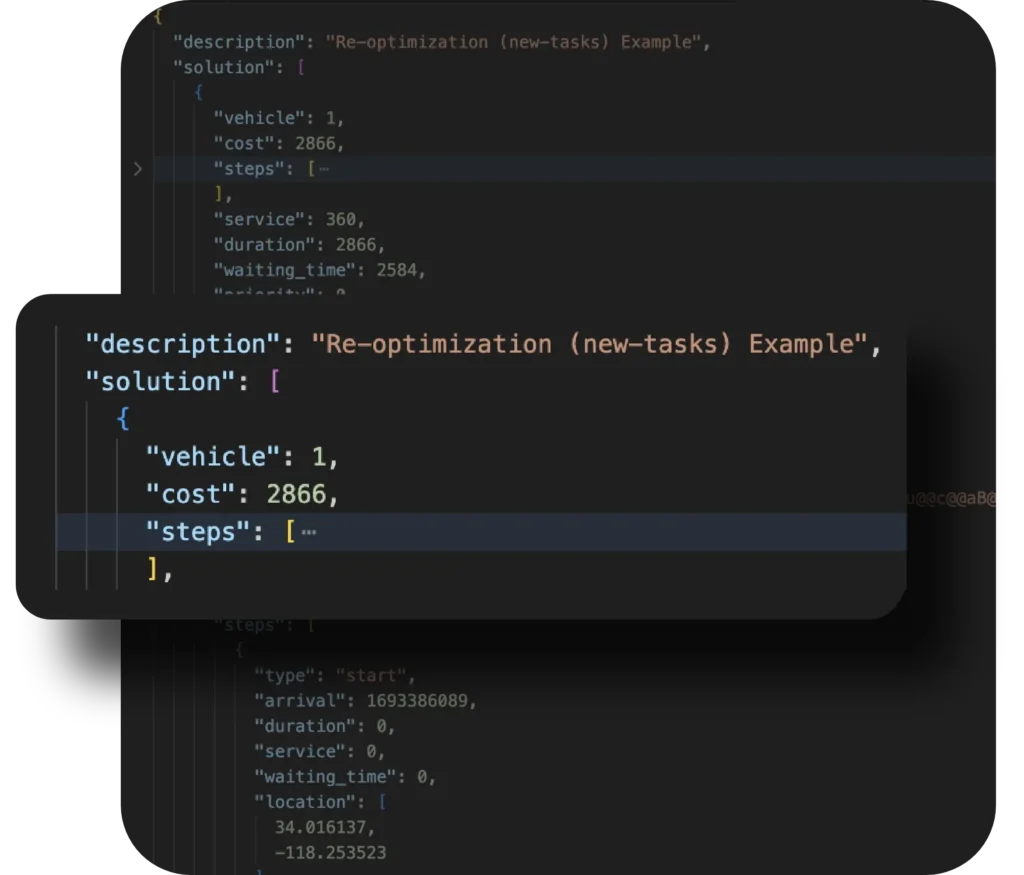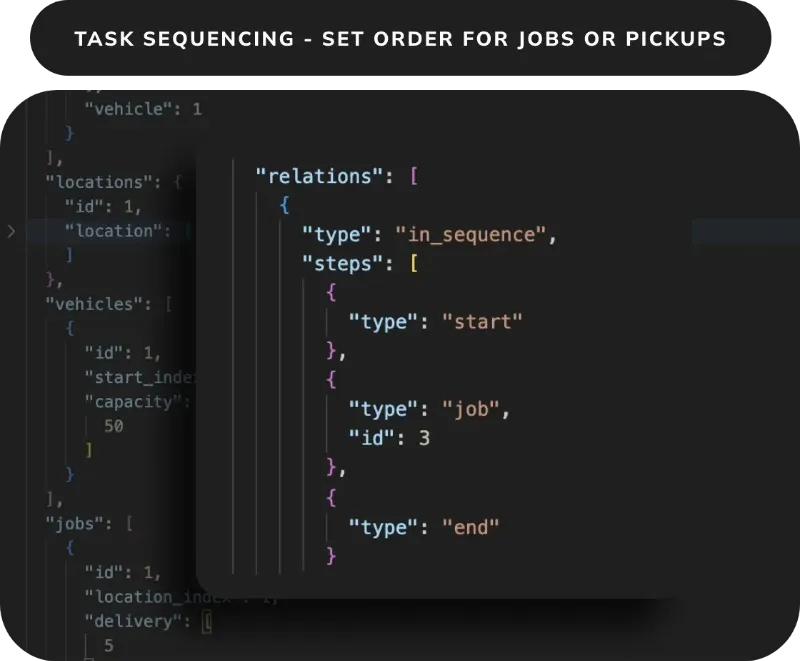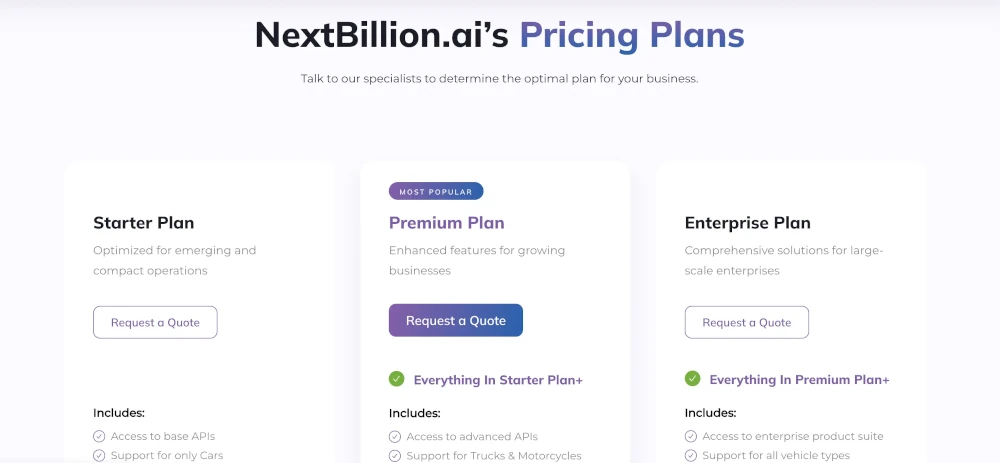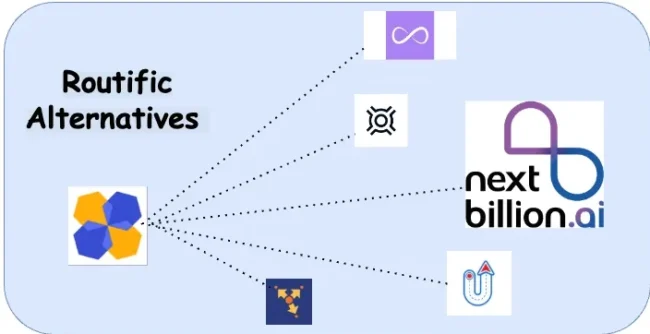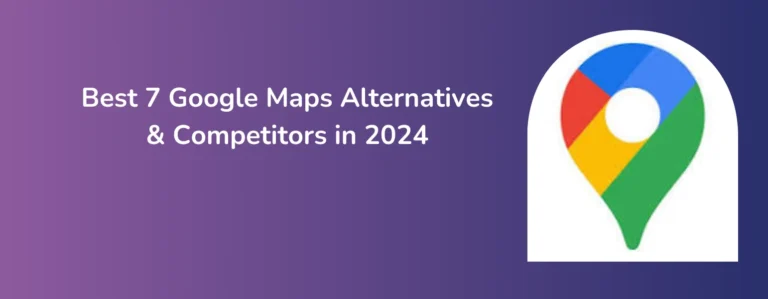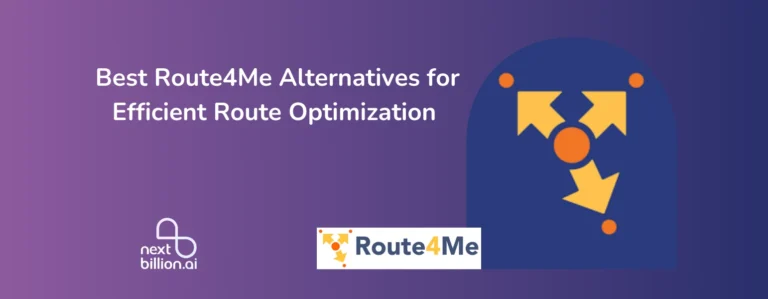
Table of Contents
When it comes to efficient delivery management, Onfleet has long been a popular choice. However, in 2025, there are several compelling alternatives and competitors worth considering. Whether you’re looking for more features, better pricing, or just want to explore other options, this article is here to help.
I’ll introduce you to the best 5 Onfleet alternatives and competitors in 2025, detailing what sets each one apart and how they can meet your delivery management needs. Let’s explore these top contenders and find the perfect fit for your business!
Reasons to Look for Onfleet Alternatives
There are good reasons for businesses to look for alternatives to Onfleet, even though it has proven to be a strong delivery management solution. Based on what customers have said, here are three main reasons to look at other options:
Reason 1: Fears about costs
Cost is one of the main reasons businesses look for alternatives to Onfleet. Many people who use Onfleet think that the prices are too high, especially for small and medium-sized businesses. Costs go up as the number of deliveries goes up, which can strain budgets.
Feedback from Customers: A number of small business owners are worried about how much Onfleet is costing them. For example, a New York courier service said, “Onfleet has great features, but the pricing structure can’t keep up with our growth.” We needed a cheaper way to do things that wouldn’t lower the quality.
Reason 2: Need for More Complex Features
Another big reason to look for alternatives is that Onfleet might not have the features you need, like more advanced or targeted ones. Onfleet may not have enough features for businesses with specific needs or that work in niche markets.
Customer Feedback: This problem was brought up by the logistics manager of a fast-growing e-commerce business, who said, “Onfleet gave us a solid base, but as our needs grew, we needed more advanced route optimization and integration capabilities.” We found that other platforms let us customize them more easily and had tools that were better suited to our business.
Reason 3: Need for Better Customer Service
Support for customers is an important part of any software solution. Some Onfleet users have said that the company’s customer service can be slow or not respond at all, which made them look for other companies with better and more reliable support.
One comment from a local food delivery service said, “We ran into a few problems that needed immediate attention, but Onfleet’s support took longer than expected to respond.” Our operations have changed a lot since we switched to a provider with a more responsive support team.
Onfleet is a powerful delivery management tool, but businesses may want to look at other options because of its high costs, lack of advanced features, and sometimes slow customer service. Customers keep bringing these issues up, which leads to the search for more affordable, feature-rich, and helpful solutions.
What is the Best Onfleet Alternative?
The best OnFleet alternatives are:
- NextBillion.ai Route Optimization API
- Tookan
- Verizon Connect
- Motive
- project44
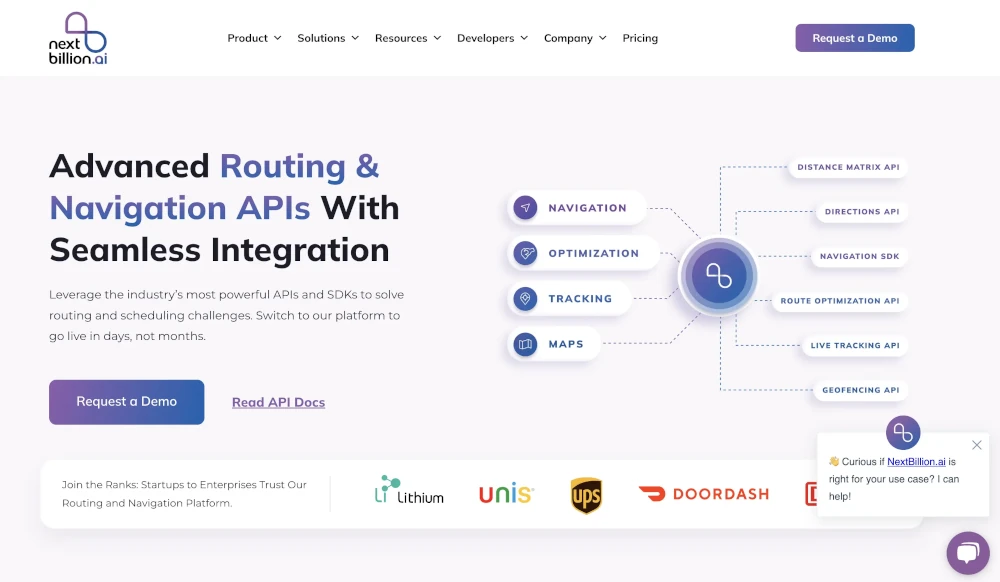
The Route Optimization API from NextBillion.ai is a tool that can handle more complicated route planning situations than Onfleet can.
This API stands out because it can handle complex variables and constraints well. It can be hard to deal with limited capacity, tight delivery windows, and vehicles that aren’t always available. However, these logistical details are easily added by the API.
This level of flexibility lets companies modify their route planning processes so they are as efficient and cost-effective as possible.
Businesses can improve their overall productivity and cut down on waste by using NextBillion.ai’s Route Optimization API to make their logistics operations more efficient.
Route Optimization API Features
The Route Optimization API has a lot of advanced features. Let’s look at the most noticeable parts.
Feature 1: Soft and hard constraints for advanced customization
One great thing about NextBillion.ai’s Route Optimization API is that it lets you make complex changes by using both soft and hard constraints. Users can fine-tune and improve their route-planning methods to meet specific operational needs and limitations thanks to these constraints.
When it comes to meeting time limits, soft constraints give you some room for maneuver. This is especially helpful when focusing on job completion rates is more important than sticking to strict time limits.
The Route Optimization API from NextBillion.ai lets users change things like when vehicles shift and when tasks are due, as long as they stay within certain limits that can be set. This level of adaptability is very useful in business settings where saving time and money is very important. It lets you assign tasks in the best way possible while also taking into account limitations in the real world.
The API also gives drivers strict limits, like a maximum waiting time, that tell them how long they have to wait after they get to a task location. This feature is very helpful for managing driver wait times and improving service delivery. This is especially true in customer-facing fields where keeping wait times as short as possible is key to keeping customers happy.
To get the most out of these features, users can set up soft and hard constraints in the API parameters. Businesses can get customized route planning solutions that make them more efficient this way.
Feature 2: You can add new tasks with a few changes
The Route Optimization API has a feature called “dynamic re-optimization” that lets new tasks fit into existing route plans without any problems. With this feature, users can quickly change their routing solutions to meet new business needs without having to start from scratch or redo whole optimization problems.
Think about a company that deals with changing order volumes throughout the day, like a grocery delivery service or a courier service. At first, a route plan is made to fulfill existing orders, with vehicles loaded and drivers sent out based on the plan.
However, as soon as new high-priority orders arrive, they need to be quickly added to the current route plan.
This is how it works
Re-Optimization Request: To start, users send a re-optimization request to the API along with the previous solution that was made with the initial constraints. This is the basis for adding new tasks while keeping the original plan as stable as possible.
Changing Variables: Depending on the new tasks, users can change a number of variables, such as the number of vehicles, shift times, vehicle capacities, task time windows, and any other relevant constraints. By carefully setting these parameters, users ensure that the re-optimized solution meets current operational needs.
Rebuilding the Request: Once the new tasks are known and the constraints have been changed, the optimization request is rebuilt, this time including both the existing tasks and the new ones. The updated request is then sent back to the API so that it can be optimized again.
Re-optimization process: the solver algorithm uses the current solution as a starting point when it gets a request to do so. Then, it tries to add the new tasks to the original plan while keeping the overall route efficiency high and minimizing delays.
The Re-Optimization feature in NextBillion.ai helps businesses stay flexible and quick to adapt to changing business conditions. This feature is useful for improving customer satisfaction and optimizing logistics operations because it lets you make quick changes to route plans while keeping overall efficiency high.
Feature 3: Task sequencing
A task-sequencing feature lets users choose the order in which different tasks should be carried out in a route plan.
Businesses can make sure that operations follow specific order requirements by defining the relationships between tasks. This increases efficiency and streamlines the task fulfillment process.
The following types of Relations can be found in the API:
the_same_route: This type of relation makes sure that all tasks listed in it are part of the same route. It works great when tasks need to be done in a single route to get the most done and use the fewest resources possible.
in_sequence: Tasks defined in this relation must be done in a certain order, but if possible, the optimizer may add extra steps between them. This gives you the freedom to route tasks efficiently while still following the order you set.
in_direct_sequence: In this relation type, tasks must be done in the order given, with no extra steps added by the solver in between. It makes sure that the set order is strictly followed and works well in situations where task order is very important and changes are not allowed.
NextBillion.ai’s Route Optimization API’s Task Sequencing feature gives companies a powerful way to improve how tasks are completed within route plans. Businesses can streamline operations, become more efficient, and make customers happier by defining task relationships and following rules for ordering tasks.
NextBillion.ai Pricing
There are different pricing plans at NextBillion.ai so that they can meet the needs of all businesses, no matter how big or small they are. Let’s take a look at the different price levels:
Starter Plan
The Starter Plan is made for small businesses and new businesses, and it has all the features they need at a price they can afford. It lets you use important APIs and support for cars, as well as get email support and use community resources.
Access to base APIs like Directions & Distance Matrix, Route Optimization Fast, Live Tracking API & SDK, and Geofencing are some of the most important features.
Premium Plan
The Premium Plan builds on what the Starter Plan can do and is designed for businesses that are growing and need more advanced features and full vehicle support.
In addition to the features in the Starter Plan, users will also be able to use advanced APIs and get support that is tailored to trucks and motorcycles. The premium support promises that you will get help right away and that any questions or problems you have will be solved.
As part of the plan, you can use a number of advanced APIs, such as Isochrones & Clustering, Route Optimization Flexible, Truck Routing & Navigation, and More.
Enterprise Plan
The Enterprise Plan offers a wide range of solutions and personalized support. It was made for large businesses with complicated operational needs.
This level adds to the Premium Plan’s features by giving you access to the full enterprise product suite and supporting all kinds of vehicles.
Businesses that choose the Enterprise Plan get the help of a dedicated Solutions Engineer who helps them set up the solution correctly by giving them personalized advice and help.
The White Glove Onboarding Support also makes sure that the change goes smoothly and helps you get the most out of the platform. This plan comes with many business products, like AI-powered ETAs, Road Editor, Custom Map data, and Custom Vehicle profiles.
NextBillion.ai knows that every business is different, so they work hard to make sure that their pricing plans can be changed to fit your needs.
Businesses are welcome to work with NextBillion.ai experts to talk about their needs in detail and come up with the best plan for their operations.
NextBillion.ai Pros and Cons
The pros and cons of NextBillion.ai’s Route Optimization API
✅Customization and Flexibility: Users can change the way route optimization works to fit their own needs by adding their own preferences, limitations, and business rules to the algorithms that do the optimization.
✅Seamless Integration: NextBillion.ai’s platform works with existing systems and workflows without any problems, so the change is easy and doesn’t affect operations too much.
✅Dedicated Support: NextBillion.ai offers expert support and help to users at all stages of their journey. From onboarding and implementation to ongoing support and optimization, NextBillion.ai’s experts help users get the most out of the platform and reach their business goals.
❌Limitations on Geocoding: The API can’t directly geocode addresses. Users must instead enter their location coordinates.
❌Limited Driving Modes: The NextBillion.ai Route Optimization API only works with car and truck driving modes right now.
2. Tookan
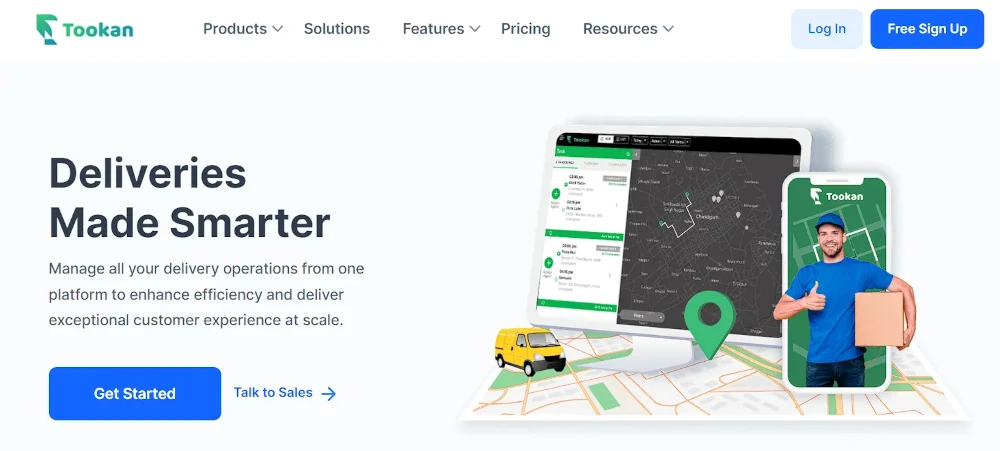
management. It’s particularly well-suited for logistics companies, e-commerce businesses, food delivery services, and any organization that relies on a fleet to manage deliveries and on-site services. Tookan’s flexibility makes it an excellent choice for small startups to large enterprises looking for scalable solutions to streamline their operations.
Tookan Features
Features of Tookan
Tookan has a wide range of features that can help improve delivery and field service:
Real-time tracking: With GPS tracking, you can keep an eye on your fleet at all times and make sure you have full control over every delivery.
Route Optimization: Make the best routes automatically, which will cut down on travel time and gas use.
Task Automation: Assign and send tasks automatically based on factors such as driver availability, proximity, and capacity.
Customizable Workflows: With customizable workflows and task templates, you can change the platform to fit the way your business works.
Notifications for Customers: Send SMS and email messages to customers automatically to let them know about the status of their delivery.
Analytics and Reporting: With detailed analytics and reporting tools, you can learn more about your operations and make decisions based on data.
Third-Party Integrations: Easily connect to well-known platforms and tools like Shopify, WooCommerce, and QuickBooks to improve your work flow.
Tookan Pricing
Tookan has a sliding scale of prices to meet the needs of businesses of all sizes and types:
Starter Plan: This plan is great for small businesses and new businesses because it has all the basic features at a reasonable price.
Professional Plan: This plan is for businesses that are growing and has more advanced features, like route optimization and custom workflows.
Enterprise Plan: This plan is designed for big businesses and includes a lot of features, personalized support, and custom solutions to meet their specific operational needs.
Tookan’s prices are flexible, so companies can add more as their needs change. To get exact pricing information and to find a plan that works for your business, you should call Tookan or go to their pricing page.
Tookan Pros and Cons
✅Scalability: Tookan can be used by businesses of all sizes, from small startups to large corporations, because its pricing and features are flexible.
✅Easy to Use: The platform has a simple interface that makes it easy for businesses to start using it right away.
✅Offering a wide range of features: Tookan’s tools for managing delivery and field services are strong and include real-time tracking, route optimization, and customer notifications.
✅Customization: Tookan can be changed to fit the workflows and processes of each business, which makes operations run more smoothly.
✅Integration Capabilities: The platform is more flexible and useful because it can easily work with a number of third-party tools.
❌Learning Curve: The platform is easy to use, but some users may need some time to get used to setting it up and configuring more advanced features.
❌Pricing for Small Businesses: Higher-tier plans are scalable, but as a business grows and needs more advanced features, it may find the higher-tier plans too expensive.
❌Support: Tookan has good customer service, but some users have said that response times are sometimes slow, especially when the service is busy.
3. Verizon Connect
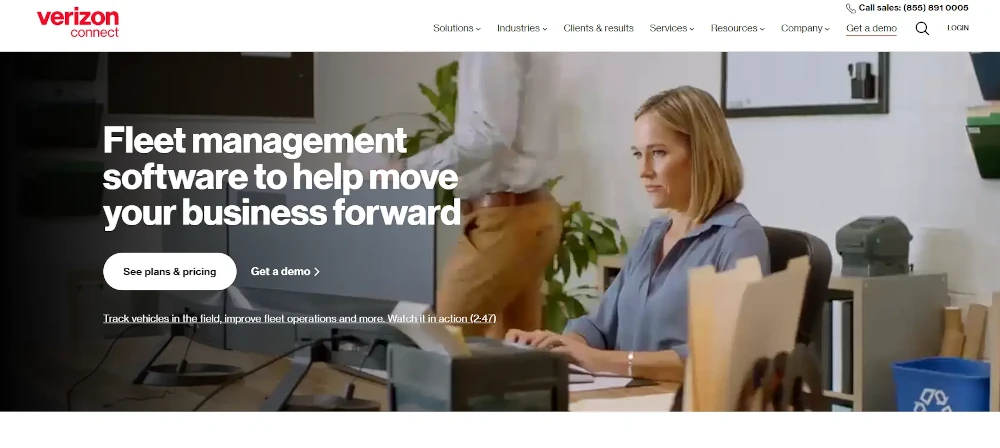
In the rapidly evolving world of fleet management and logistics, staying ahead of the competition requires cutting-edge technology and reliable solutions. Enter Verizon Connect, a game-changer in the industry, renowned for its comprehensive suite of tools designed to optimize fleet operations, improve efficiency, and boost profitability. Whether you manage a small delivery service or a large logistics company, Verizon Connect offers innovative features like real-time tracking, advanced analytics, and seamless integration capabilities.
Who is it for?
Verizon Connect is designed for businesses of all sizes that need comprehensive fleet management solutions. It caters particularly well to industries such as transportation, logistics, construction, and service-based businesses that rely heavily on vehicle fleets. Verizon Connect is ideal for organizations looking to improve their fleet efficiency, safety, and compliance through advanced telematics and GPS tracking.
Verizon Features
Verizon Connect offers a robust suite of features tailored to enhance fleet management and operational efficiency:
- Real-Time GPS Tracking: Provides live location tracking of all fleet vehicles, enabling businesses to monitor their movements and ensure timely deliveries.
- Driver Behavior Monitoring: Tracks and reports on driver behaviors such as speeding, harsh braking, and rapid acceleration, helping to improve safety and reduce liability.
- Route Optimization: Optimizes routes based on real-time traffic data and historical patterns, reducing travel time and fuel consumption.
- Maintenance Scheduling: Automates vehicle maintenance scheduling to prevent breakdowns and extend the life of fleet vehicles.
- Fuel Management: Monitors fuel usage and identifies inefficiencies to help reduce costs.
- Compliance Management: Helps businesses stay compliant with industry regulations, including ELD (Electronic Logging Device) mandates.
- Mobile Access: Offers a mobile app that allows fleet managers and drivers to access essential information on the go.
Verizon Pricing
Basic Plan: The Basic Plan comes with basic features like tracking with GPS in real time, watching how drivers act, and basic reporting. This plan is good for businesses that are just starting to use fleet management solutions or for smaller fleets.
Cost: about $35 a month for each vehicle.
Standard Plan: The Standard Plan has more features, such as automatically finding the best routes, managing fuel, and planning maintenance. This plan is great for fleets that are in the middle size range and need more advanced management tools.
Cost: about $50 a month for each vehicle.
Premium Plan: The Premium Plan has all the features of the Standard Plan plus advanced analytics, management of compliance, and custom integrations. This plan is made for businesses with complicated needs or fleets that are big
Cost: about $70 a month for each vehicle.
How much hardware costs
As part of Verizon Connect, each vehicle must have a GPS tracking device installed in addition to the monthly fees. These devices allow tracking in real time and data collection, which is needed for the software to work properly.
GPS Tracking Device: Prices vary from $100 to $300 per unit, based on the model and features.
Installation Fees: Some plans may include installation in the price, while others may charge an extra $50 to $100 per vehicle for a professional installer.
Verizon Pros and Cons
✅Detailed Feature Set: It has many features that cover all areas of fleet management, from safety and tracking to maintenance and following the rules.
✅Scalability: It can be used by businesses of all sizes, from small fleets to large companies, and it can be changed as the business grows.
✅Integration Capabilities: It’s easy to connect to other business software and systems, which makes operations run more smoothly overall.
✅Strong Customer Support: They are known for having strong customer support that includes training and help with fixing problems.
❌Cost: Verizon Connect’s services may be more expensive than those of some competitors because they cover more areas. This could be a problem for smaller businesses.
❌Complexity: The platform has a lot of features that can be confusing for new users. They need to go through a learning curve to fully use all of its features.
❌Hardware Dependence: Each vehicle must have a GPS tracking device installed, which can add to the initial cost and make things more difficult.
4. Motive
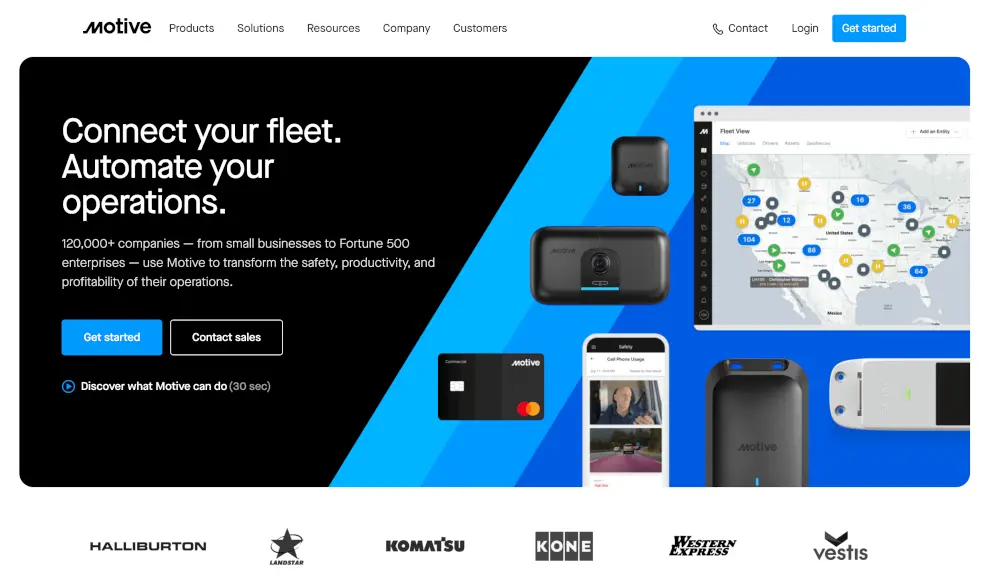
Motive is a fleet management solution that empowers businesses to streamline their operations, enhance efficiency, and improve customer service.
Who is it for?
Motive has full solutions for GPS tracking, vehicle telematics, PTO monitoring, and OEM integrations for businesses of all sizes that depend on fleet operations.
Motive Features
Fleet View: See how your fleet is moving in real time and see how it has moved in the past to make better decisions.
Automatic Pairing: Connect drivers, vehicles, trailers, and equipment without any problems so you can see everything and run your business smoothly.
Geofence Notifications: Get real-time updates on the movement, scheduling, and security of your fleet to improve operational control.
Live Traffic and Weather Conditions: Layered directly onto maps for precise route planning and navigation.
Analytics: Gives information about how well the vehicle and driver are doing.
ELD Compliance: Makes sure that hours worked, preventative maintenance, DVIR, and offline access are all followed.
Dashcam: Dashcams can be used to record and rate safety situations.
Motive Pricing
Motive’s prices depend on the goods that are bought and the number of assets or vehicles that the company owns.
Motive pros and cons
✅Integrations: Adding other systems is done without any problems.
✅Ease of Use: The interface is easy to use, especially for drivers, and the ELD function works reliably.
✅Notifications: A lot of notifications keep users up to date even when they’re not logged in.
❌Speed of Implementation: It takes a long time for changes, fixes, and new features to be added.
❌Problems with the Mobile App: Some users say they are having problems with the mobile app, mostly with unit views.
❌Customer Service: There have been reports of bad customer service, unauthorized charges, and refund delays.
5. Project44
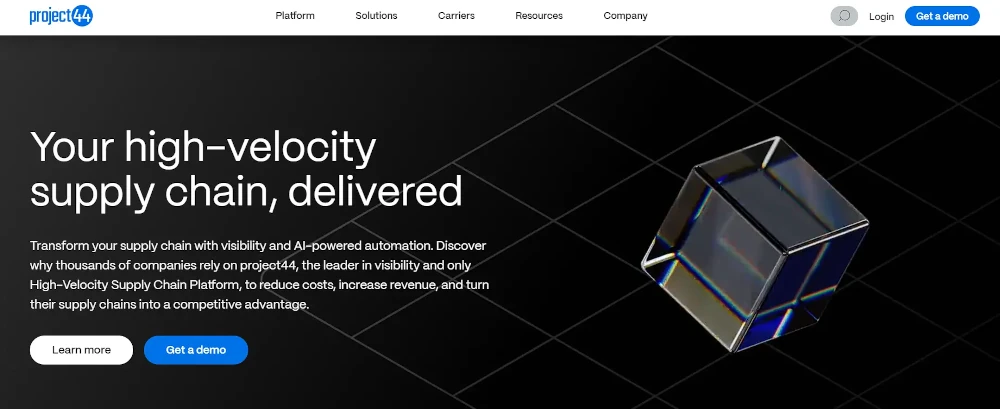
Project44 is a leading logistics technology company that specializes in providing advanced visibility and connectivity solutions for the supply chain industry.
Who is it for?
Project44’s Last Mile platform is tailored for retailers seeking to enhance the customer delivery experience from the moment of purchase to doorstep delivery.
project44 Features
Delivery Flows: Use alerts and inventory management to speed up the delivery process.
Metrics for Performance: Keep an eye on key performance indicators and compare your results to standards in your field.
Visibility: With features like shipment tracking and geofencing, you can see everything about shipments, compliance, and order-level details.
Network Management: Use customizable alerts to automate the onboarding process and ensure the quality of the data.
project44 Pricing
Project44’s pricing starts at $500.00 per month. For advanced features and capabilities, it offers a customized pricing model.
project44 Pros and Cons
✅Users like how easy project44 is to use and how it has a simple interface. Users also like that it has detailed reports and filters for analyzing data.
✅Real-time visibility and frequent GPS pings make it possible to give accurate estimates of arrival times and notify customers before they need to be.
❌Some users have had problems with tracking or updates from trucks being late, which could be because of how the carrier is integrated and set up.
❌A high turnover rate among customer service reps can slow down the learning and implementation processes.
Optimize Logistics with NextBillion.ai’s Route Optimization API
While Onfleet remains a popular choice for delivery management, exploring alternatives can provide your business with enhanced features and flexibility. In 2025, several strong competitors stand out, including NextBillion.ai’s Route Optimization API, which offers advanced capabilities to optimize logistics operations.
NextBillion.ai’s Route Optimization API goes beyond standard route planning, providing businesses with sophisticated tools to streamline operations, minimize resource wastage, and boost productivity. Its ability to handle complex constraints and offer customizable solutions makes it a standout alternative.
By integrating advanced route planning features, your business can achieve greater efficiency and improved service quality, ensuring you stay ahead in the competitive logistics landscape of 2025.
About Author
Rishabh Singh
Rishabh Singh is a Freelance Technical Writer at NextBillion.ai. He specializes in Programming, Data analytics and technical consulting, turning complex tech into clear and engaging content.





